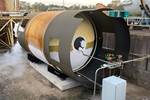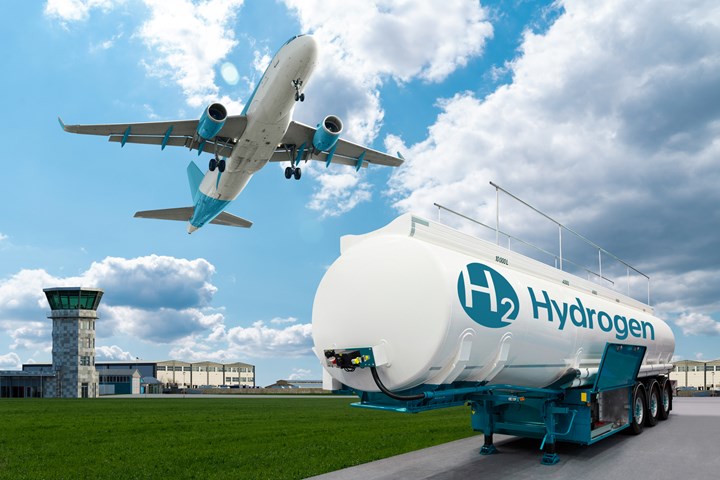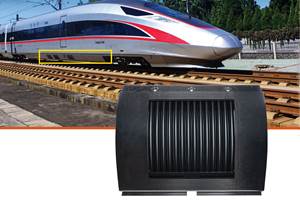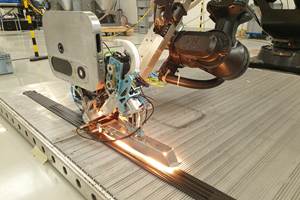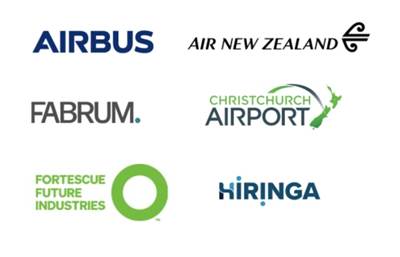NCC creates concept design tool for composite H2 cryogenic tanks
Design tool progresses cryogenic hydrogen tank design for a given set of parameters, further demonstrated through three tank design options.
The National Composites Centre (NCC, Bristol, U.K.) has created a concept design tool that optimizes hydrogen cryogenic tank designs according to a customer’s specific requirements. Developed over 12 months by NCC engineers, the tool works around key parameters such as hydrogen mass, boil off rate and dormancy — the amount of time from the refueling of a tank to the need to vent a gas pressure buildup, if the aircraft was stationary overnight.
The new design tool enables the NCC to quickly and easily deliver the most efficient tank design for the given set of parameters. In particular, it will help manufacturers identify the right designs to take forward to the detailed design phase, thereby lowering the barrier to entry for businesses wanting to build their capabilities in composites for the new hydrogen economy.
The NCC team has successfully trialed the concept design tool as part of the Aerospace Technology Institute (ATI) FlyZero program which aimed to realize zero carbon emission commercial aviation by 2030. The team used the tool to develop three cryogenic tank design options for regional, narrowbody and mid-size aircraft, evaluating thermal, static, shape and volume needs. All the concepts reportedly demonstrated significant weight savings for the inner skin and outer skin of the tanks when compared to a metallic baseline.
“Design tools are essential for the progression of cryogenic hydrogen storage tanks as part of the future fuel systems of zero-emission aircraft for medium- to long-range flights,” says Alex Hickson, head of technology – structures, manufacturing and materials from the Aerospace Technology Institute. “The development of these capabilities that can be accessed by all those seeking to mature designs and systems for a sustainable aviation sector marks a valuable step forward for the U.K. The NCC and broader HVM Catapult form part of the growing U.K. network establishing hydrogen capabilities for the benefit of the environment while creating opportunities for the U.K. supply chain in this future low-carbon economy on the path to target net zero by 2050.”
While hydrogen has potential to lower the carbon footprint of commercial aviation, significant engineering challenges exist. Chief amongst these is the issue of fuel storage — hydrogen has a lower volumetric density than conventional aviation fuels, so must be kept at -253°C in liquid form, and cannot take up too much space within the aircraft. Tanks must be capable of resisting pressure and flight loads but with minimal mass penalty, and configured to fit the limited, sometimes awkwardly shaped interior volumes available. According to the NCC, composites can offer a competitive solution in the future — a work program the NCC is progressing with partners to mature the technology.
The concept design tool forms part of the NCC’s Hydrogen work program building on two years of R&D and a singular vision to boost supply chain capabilities for composite hydrogen pressure vessels and cryogenic tanks, in order to anchor manufacturing in the U.K. The next steps in this program are underway, with a U.K.-based composite cryogenic storage tank testing program that will validate and accelerate design, manufacture and test capabilities, commencing with a linerless carbon fiber tank for storing LH2). The team are also working on materials characterization, developing a true understanding of the behavior of composites at cryogenic temperatures. (Read “composite cryogenic hydrogen developments” sidebar above.)
The concept design tool we have developed offers significant value and advantage to manufacturers looking to accelerate their composite cryogenic tank capabilities,” Marcus Wall-Bruck, head of hydrogen technologies, adds. “We have pooled our collective engineering expertise at the NCC to build a design tool that is flexible and rigorous, and ultimately gives confidence to customers to down-select concepts more quickly.”
Access to the Hydrogen concept design tool is available as part of the NCC’s collaborative innovation programs with industry and the team is actively looking for partners to come forward to build a robust U.K. supply chain. Companies interested in joining the NCC Hydrogen program and trialing the tool can contact hydrogen@nccuk.com to express interest.
Related Content
Composite sidewall cover expands options for fire-safe rail components
R&D project by CG Rail explores use of carbon fiber-reinforced thermoplastics and recycled manufacturing scrap to meet fire safety, weight and volume targets.
Read MoreASCEND program update: Designing next-gen, high-rate auto and aerospace composites
GKN Aerospace, McLaren Automotive and U.K.-based partners share goals and progress aiming at high-rate, Industry 4.0-enabled, sustainable materials and processes.
Read MoreATLAM combines composite tape laying, large-scale thermoplastic 3D printing in one printhead
CEAD, GKN Aerospace Deutschland and TU Munich enable additive manufacturing of large composite tools and parts with low CTE and high mechanical properties.
Read MoreCarbon fiber, bionic design achieve peak performance in race-ready production vehicle
Porsche worked with Action Composites to design and manufacture an innovative carbon fiber safety cage option to lightweight one of its series race vehicles, built in a one-shot compression molding process.
Read MoreRead Next
On the radar: Cryogenic testing of composites for future hydrogen storage
Netherlands, U.K., France, Germany and the U.S. build up test capability, look at thermoset and thermoplastic composite materials.
Read MoreFabrum supplies lightweight composite LH2 tanks for aviation, launches consortium with Airbus, other partners
New Zealand company works with FSE, GKN Aerospace to test LH2 storage and delivery system, advances zero emissions flight via Hydrogen Consortium and $23 million Series A funding.
Read MoreVIDEO: High-volume processing for fiberglass components
Cannon Ergos, a company specializing in high-ton presses and equipment for composites fabrication and plastics processing, displayed automotive and industrial components at CAMX 2024.
Read More

